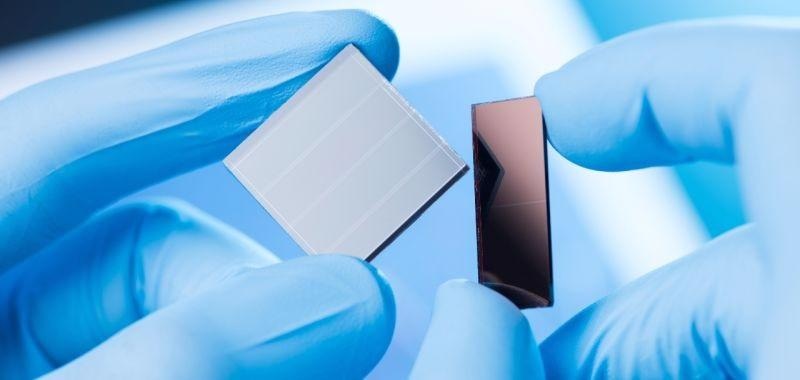May 20 2021
Scientists of Australia have come up with a treat for a world that is starving for affordable and more efficient renewable energy.
 An example of a next-generation solar cell prototype material. Image Credit: Shutterstock.
An example of a next-generation solar cell prototype material. Image Credit: Shutterstock.
A study performed under the guidance of the ARC Centre of Excellence in Exciton Science has demonstrated that the two-dimensional (2D) thin films utilized in certain perovskite solar cells look quite similar to a sandwich. Perovskite is a fascinating material that forms the front line of solar energy research and design.
Earlier, researchers believed that these 2D perovskite films featured a “gradient” structure, in which some components were found deep within the material, while other complementary elements were only situated closer to the surface, such as topping on a cracker.
But in a study reported in the Journal of Materials Chemistry C, associates of Exciton Science based at the University of Melbourne, along with collaborators at Australia’s national science agency CSIRO and Shandong University, have offered proof for a sandwich-like structure, where two layers of the same type (the bread) encompass one central, contrasting layer (the filling).
This layout promotes excitons—quasiparticles essential for transforming sunlight into electricity—to move from the central layer to both the surfaces of the film, while free carriers transfer charge for collection by electrodes, thereby supporting highly efficient solar energy generation when integrated into devices.
A real problem has been understanding what the structure of these 2D perovskite solar cells really is. There’s been quite a lot of controversy in the literature. The advance that we’ve achieved is to find out what the real structure of these films is and how they work in a solar cell.”
Ken Ghiggino, Study Corresponding Author and Professor, ARC Centre of Excellence in Exciton Science
2D perovskite devices are of specific importance as a result of their extreme durability and stability when compared to “3D” perovskite cells. New types of devices developed by scientists, called prototype 2D devices, with the help of infrastructure and expertise at CSIRO have exhibited an efficiency of 13%.
Deeper basic knowledge about the structure will enable the researchers to increase the efficiency of the device by modifying the thickness of the layers inside the perovskite “sandwich.”
Besides solar cells, optimized 2D perovskite films find significant applications in light-emitting diodes (LEDs) and photodetectors, like biomedical imaging, optical communications, video imaging, gas sensing, night-vision, motion detection, and security.
This is the first time a sandwich structure has been proposed versus the conventional gradient distribution model. We think this discovery will help design and device optimisation for higher performance of the 2D cells and LEDs.”
Dr Fei Zheng, Study Lead Author, ARC Centre of Excellence in Exciton Science
Journal Reference:
Zheng, F., et al. (2021) A sandwich-like structural model revealed for quasi-2D perovskite films. Journal of Materials Chemistry C. doi.org/10.1039/D1TC00606A.